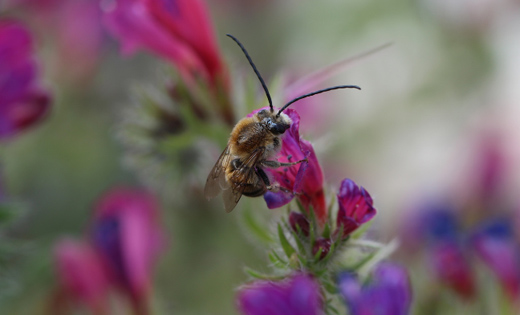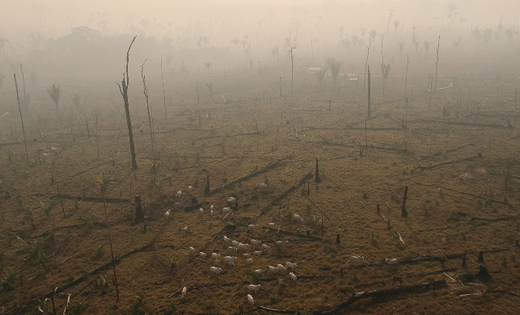Research Round-up – February 2021
Welcome to the latest instalment of our monthly feature series throwing the spotlight on our research success stories.
The strength of our research is in making a real and telling difference to the world around us, by working across traditional boundaries to find innovative solutions to some of the greatest challenges facing society today.
Here we highlight some of latest projects being pioneered by the expertise and efforts of the highly talented research community at Leeds.
From grant awards to examples of outstanding interdisciplinary work and best practice, we’re keen to showcase your research achievements. See the foot of this article for details of how you can get involved.
Featured in this month's round-up:
- Exploring the impact of covid-19 on BAME groups
- Using lockdown lessons to reduce household food waste
- Glacier movements acceleratings
- Protecting UK insect populations post-Brexit
- New catalytic converter development ‘out of this world’
- Ozone-depleting gas emissions back on the decline
- New £10m research centre for greener global finance
- Feeding Leeds: A fair and self-sustaining food system for the city
- ‘Amazing progress’ in childhood cancer treatment
- Visualisation of ‘dancing DNA’
- Pore-like proteins designed from scratch
- Banning wild meat could add to global food problems
- Packed programme celebrates innovation
- Innovation fellowship programme: applications now open
- Benefits system needs to be made simpler and fairer
- Offer your garden pond for research

Leeds researchers will make recommendations to policymakers on the interventions needed to support BAME groups
Exploring the impact of covid-19 on BAME groups
The ways in which discrimination is worsening the impact of covid-19 on people in Black, Asian and minority ethnic (BAME) groups in the UK will be explored in a new research project.
Iyiola Solanke, Professor of EU Law and Social Justice in the University’s School of Law, has been awarded £2.5 million to create the Consortium on Practices for Wellbeing and Resilience in Black, Asian and Minority Ethnic Families and Communities (Co-POWeR).
The funding has been granted by UK Research and Innovation (UKRI) via the Economic and Social Research Council (ESRC).
Researchers will investigate the combined impact of covid-19 and racial discrimination on wellbeing and resilience across these groups, aiming to create a fuller picture of these communities’ vulnerabilities.
The 18-month project will explore how emergency covid-19 powers are disproportionately impacting people from BAME backgrounds and how the pandemic is affecting care and caring, as well as mental and physical health and wellbeing across all ages.
Using the findings, the team will make recommendations to policymakers on the interventions needed to support these groups. The team will also work with documentary filmmakers and theatre arts specialists to develop non-fiction and fiction outputs.
Professor Solanke, the project’s principal investigator, said: “There are two viruses affecting people from Black and Minority Ethnic communities across the UK. One is covid-19 and the other is discrimination. We want to illustrate that the way in which covid-19 is exacerbating the experience of inequality for those in these communities.”

The project will develop interventions to help support households in wasting less food
Using lockdown lessons to reduce household food waste
During the first national lockdown in 2020, self-reported food waste levels in the UK fell by 34% – the sharpest drop on record.
A new national research project has been set up to understand positive change in food waste behaviour and use the insights to help the nation waste less food when the pandemic ends.
Researchers from Leeds and two leading environmental organisations – WRAP and Zero Waste Scotland – will examine food waste during and after lockdown periods, and develop interventions to support sustainable consumer behaviour.
The 18-month research project has been awarded funding of £328,000, including a grant of £268,000 from the Economic and Social Research Council (ESRC), as part of the UK Research and Innovation’s rapid response to covid-19.
Dr Gulbanu Kaptan, Associate Professor of Behavioural Decision Making at Leeds University Business School, is leading the research. She said: “Research published by WRAP shows significant changes in behaviour and a reduction in the self-reported level of food waste in the first national lockdown period.
“While we understand some of this behaviour, we want to broaden our knowledge of why the changes came about, and how we can build on this to help people prevent more food going to waste in future.
“We are particularly interested in the determinants of behaviour: for instance, what impact do our emotions have on wasting food, and what are the personal goals and values around how we buy and eat food?”
The project will develop interventions to help support households in wasting less food and will help WRAP and Zero Waste Scotland understand how to reduce food waste in the future.

On average, the speed of all 14 glaciers featured in the study has increased by almost a quarter
Glacier movements accelerating
Glaciers in West Antarctica are moving more quickly from land into the ocean, contributing to rising global sea levels.
A 25-year record of satellite observations has been used to show widespread increases in ice speed across the Getz sector for the first time, with some ice accelerating into the ocean by nearly 50%.
The new study, led by Leeds, reports that 14 glaciers in the Getz region are thinning and flowing more quickly into the ocean. Between 1994 and 2018, 315 gigatonnes of ice have been lost, adding 0.9mm to the global mean sea level – equivalent to 126 million Olympic swimming pools of water.
The results of the study show that, on average, the speed of all 14 glaciers has increased by almost a quarter, with three glaciers speeding up by more than 44%.
This research will help scientists determine whether glaciers in the region may collapse in the next few decades and how this could affect the future global sea-level rise.
Heather Selley, lead author of the study and a glaciologist at the Centre for Polar Observation and Modelling at Leeds, said: “The Getz region of Antarctica is so remote that humans have never set foot on most of this part of the continent. Satellite radar altimetry records have shown substantial thinning of the ice sheet.
“However, the high rates of increased glacier speed – coupled with ice thinning – now confirms the Getz basin is in ‘dynamic imbalance’, meaning that it is losing more ice than it gains through snowfall.”
By examining 25 years of ocean measurements, the research team was able to show complex and annual variations in ocean temperatures. These results suggest that the ‘dynamic imbalance’ is mainly caused by longer-term ocean forcing, where increased heat content in the ocean is interacting with the ice and enhancing melt.

Leeds researchers will undertake the most comprehensive analysis to date of British insect populations
Protecting UK insect populations post-Brexit
The health of the UK’s insect populations is to be assessed by a new project, which aims to advise on policies to help protect them more effectively post-Brexit.
There are growing concerns that insects are in widespread decline across Europe and beyond, thought to be caused by intensive agriculture and other human-induced pressures, such as climate change. However, while there is strong evidence of falling numbers in a few insect groups in certain areas, the evidence for overall insect declines in Britain remains sketchy at best.
Researchers have been awarded £2.3 million from the Natural Environment Research Council (NERC) to provide definitive evidence on whether insects are in decline in the UK, to understand the key drivers threatening their existence and to support the development of environmental policies to protect them.
The new project, led by Leeds with partners from the University of Reading, the UK Centre for Ecology and Hydrology (UKCEH) and Rothamsted Research, will undertake the most comprehensive analysis to date of British insect populations from as wide a range of sources – and for as broad a set of species – as possible.
The project team will then use the data to test what factors have had the strongest impact on insect populations, and to model how different policy options could counter these effects. These findings will make an important contribution to the UK’s biodiversity conservation strategy now it is no longer part of the European Union.
Project lead Professor Bill Kunin, from the School of Biology, said: “Insects are the backbone of a healthy, functioning environment, so it is absolutely vital that we look after them.
“Through our new project, we hope to provide a step-change in data on UK insects, to inform evidence-based policies that help nature, and thus humans, to thrive.”

Researchers at Leeds have demonstrated their new technology is effective at much lower temperatures than current systems
New catalytic converter development ‘out of this world’
Scientists are using an analysis of gases in the atmosphere of Venus to develop a new generation of lower-cost and more effective catalytic converters.
Based on what they learned, a research team at Leeds has manufactured a synthetic compound it believes will reduce toxic emissions of carbon monoxide (CO) and nitrogen oxides (NOx) from diesel engine exhaust.
Vehicle fumes contribute to poor air quality in towns and cities. A recent report from Public Health England estimated that between 28,000 and 36,000 people a year die from long-term exposure to air pollution.
Catalytic converters are fitted to the exhaust pipes of most internal combustion engines to reduce the amount of toxic gases and pollutants by using a catalyst to facilitate chemical changes in the exhaust fumes.
But there are limitations with the current technology. Many systems use costly platinum group metals, and the catalyst and the converters do not become fully effective until the engine is very hot, above 150 degrees – so they do not work as well when engines have just been started, or vehicles are moving slowly or stationary, which is often the case in urban areas.
Researchers at Leeds have demonstrated their new technology is effective at much lower temperatures.
The researchers began to work on their idea after investigating a fundamental question about the behaviour of carbon dioxide in the atmosphere of Venus.
The team focused its attention on the role played by a meteorite material found in the atmosphere of Venus, iron silicate. They concluded that the iron silicate must be acting as a catalyst, enabling the carbon monoxide and oxygen atoms to recombine. That process of creating carbon dioxide from carbon monoxide and oxygen is one of the key features required of a catalytic converter.
With funding from the Science and Technologies Facilities Council, Leeds scientists have developed a synthetic compound as a proof of concept. They are now working on ways it could be manufactured at scale.

Leeds researchers show the improtance of detecting and understanding of atmospheric changes linked to the ozone-depleting chemical
Ozone-depleting gas emissions back on the decline
Emissions of a banned ozone-depleting gas have dropped rapidly following a previously unexpected spike.
A team of international researchers analysed global air measurements of the ozone-depleting chemical chlorofluorocarbon CFC-11. The analysis involved the use of detailed atmospheric models to remove the effects of natural meteorological variations.
They found that five years after an unexpected rise in emissions of the gas – which were linked to China – emissions dropped sharply between 2018 and 2019.
The abrupt turnaround of CFC-11 – the production of which should have been phased out worldwide by 2010 – is revealed in a paper published in the journal Nature.
Co-author, Professor Martyn Chipperfield from the School of Earth and Environment and the National Centre for Earth Observation, said: “This is a good news story. It was surprising to detect the recent rapid decline in CFC-11 emissions but very welcome.”
Co-author Dr Wuhu Feng, also from the School of Earth and Environment, and the National Centre for Atmospheric Science, added: “This work shows the importance of maintaining global observation networks and modelling capabilities, so that we can detect and understand these atmospheric changes.”
The new results show that from 2018 to 2019, emissions CFC-11 decreased globally by 18,000 tonnes per year to 52,000 tonnes per year. Current annual emissions now appear to have returned to pre-2012 levels.

Leeds becomes a part of the national initiative that will help financial institutions make environmentally sustainable decisions
New £10m research centre for greener global finance
The UK is investing £10 million in a new national green finance research centre that will advise lenders, investors and insurers.
The research centre will enable them to make environmentally sustainable decisions and support a greener global economy.
New physical hubs in Leeds and London will support companies and start-ups commercialise products that can green global finance, including tools that measure storm and flood risk facing properties or the pollution created by companies and the liabilities that result.
Access to scientifically robust data and analytics is currently patchy and unreliable. Armed with better information, underpinned by innovative UK science, financial institutions around the world will be much better placed to make decisions that contribute to a more sustainable planet.
This will help financial institutions shift money away from risky activities that harm the environment, such as coal-fired power and deforestation, and towards activities that are less harmful, such as renewable power and sustainable agriculture.
The UK Centre for Greening Finance and Investment (CGFI) will be funded by UK Research and Innovation (UKRI) and led by the University of Oxford.
The centre will work with finance professions, such as the Chartered Bankers Institute and Chartered Financial Analysts UK, to ensure that every professional financial decision takes climate change into account.

Leeds researchers discovered that only 48.4% of the city’s total calorific demand can be met by current commercial food production activities
Feeding Leeds: A fair and self-sustaining food system for the city
A bold vision for feeding the population of Leeds would transform the city into a far more food secure, fair and sustainable place to live.
Analysts from the University’s Global Food and Environment Institute studied the city’s food system to assess its resilience in the face of supply chain and delivery disruptions caused by severe weather, climate change and events such as the covid-19 pandemic and Brexit.
The urban food system includes all the activities involved in the production, distribution and consumption of food within a city.
Leeds researchers mapped and analysed publicly available data relating to agricultural production and human health in the metropolitan district and discovered that 48.4% of the city’s total calorific demand can be met by current commercial food production activities.
This is relatively high for such an urbanised space, but there is little diversity in what is being produced. Three cereal crops (wheat, barley and oats) dominate the Leeds production system, reflecting a post-war food system that focused on energy supply. This means that most of the fruits and vegetables consumed in the city are transported in from elsewhere.
Caroline Orfila, who led the study, published in the journal Food Security, is Professor of Plant Biochemistry and Nutrition in the School of Food Science and Nutrition. She said: “Our work demonstrates the inequalities in food production and dietary health.
“Any disruptions to food production, distribution or retail, from flooding, longer-term climate change, covid-19 or Brexit, is likely to impact those in deprived areas the most.”

The latest survival figures demonstrate the progress that has been made in treating cancer
‘Amazing progress’ in childhood cancer treatment
The childhood cancer survival rate in Yorkshire is among the best in the world, with 86 out of every 100 children diagnosed with the disease before their 15th birthday living for at least five years.
The comparable figure 20 years ago was 73 out of 100 children. That means for every 100 children, 13 are now surviving who would not have done so two decades ago.
Improvements in treatment mean that for some cancers, almost all children will survive at least five years.
Yorkshire has a five-year survival rate that matches the best figures reported by countries around the world, including Australia and Canada.
The survival rate is an important benchmark. Traditionally, a child who lives beyond five years of diagnosis is considered to have been cured of their cancer, although in some children the disease does sadly recur.
The latest survival figures have been released to mark International Childhood Cancer Day and demonstrate the progress that has been made in treating the disease.
The source of the statistics is the Yorkshire Specialist Register of Cancer in Children and Young People, a research database run by Leeds that holds demographic and clinical information on childhood and young adult cancer patients.
Dr Richard Feltbower, Senior Lecturer in Epidemiology at Leeds and leader of the Yorkshire register’s research programme, said: “Collecting and analysing high-quality epidemiological data is central to improving cancer care.
“We are able to determine those cancers that are the most difficult to treat, or where the side-effects of treatment are most toxic, especially treatment which may have long-term side effects.”

The researchers were able to see the position of every single atom in the DNA and how it twists and writhes
Visualisation of ‘dancing DNA’
Videos showing for the first time how small circles of DNA adopt dance-like movements inside a cell have been developed by researchers in Yorkshire.
The footage, created by a team of scientists from the Universities of Leeds, Sheffield and York, and recorded at UCL, is based on the highest resolution images of a single molecule of DNA ever captured.
They show in unprecedented detail how the stresses and strains that are placed on DNA when it is crammed inside cells can change its shape.
Previously, scientists were only able to see DNA by using microscopes limited to taking static images. But now, the Yorkshire team has combined advanced atomic force microscopy with supercomputer simulations to create videos of twisted molecules of DNA.
The images are so detailed it is possible to see the iconic double-helical structure of DNA, but when combined with the simulations, the researchers were able to see the position of every single atom in the DNA and how it twists and writhes.
Dr Sarah Harris, Associate Professor in the School of Physics and Astronomy, who supervised the research, said: “The laws of physics apply just as well to the molecules that make up living systems as to sub-atomic particles and galaxies.
“The synergy between our experiments and computer models shows we are beginning to understand the physics underlying supercoiled DNA. This insight should help researchers design bespoke mini-circles for future therapies.”

The expertise at the Astbury Centre was brought in to validate that the new protein can self-assemble into an artificial pore
Pore-like proteins designed from scratch
Scientists at Leeds are part of an international collaboration that has designed a protein that self-assembles into an artificial pore.
The protein sequence spontaneously transforms into a ‘transmembrane beta-barrel’ – a tiny conduit or pore that embeds itself into a lipid membrane, mimicking its natural counterparts that are found in the walls of bacterial cells and enable nutrients, vitamins and strands of DNA to pass through.
There is intense scientific interest in the self-assembly of artificial pores as a way of exploiting the way nature moves ‘cargo’ in and out of cells, for use in drug delivery or filtration technologies.
Professor Sheena Radford FRS, Director of the Astbury Centre for Structural Molecular Biology, co-supervised a part of the research conducted at Leeds.
She said: “Proteins are the molecular machines that carry out functions necessary to sustain life. Science has a lot to learn from the way they work, and there has been significant progress in designing bespoke proteins – but up to now, it has not been possible to design a protein that would form a transmembrane beta-barrel.
“What has been achieved in this study is a major advance.”
The expertise at the Astbury Centre was brought in to validate that the new protein did, in fact, fold into a transmembrane beta-barrel and embed itself into a lipid membrane. The analysis showed the protein could fold up efficiently without the help of any accessory proteins. This is in marked contrast to how natural transmembrane beta-barrels fold.

International attention on wildlife trade has increased during the past year
Banning wild meat could add to global food problems
A blanket ban on the trade of wild meat could create risks for nature and for human health, according to a new study.
Governments and the World Health Organization (WHO) are under pressure from wildlife protection and animal welfare campaigners to ban hunting of all wild animals for food and end trade in wildlife.
But findings by a team of international researchers, including Leeds, indicates that such a ban might not only increase food insecurity for some countries and marginalised groups, but it may also damage the biodiversity and habitats that campaigners are trying to protect.
International attention on wildlife trade has increased during the past year, after the earliest cases of covid-19 were linked to a ‘wet market’ – a market selling fresh meat, fish, fruits and vegetables – in China. Calls to ban the trade and consumption of wildlife to protect public health and biodiversity quickly followed.
Senior author, Dr David Williams, from the School of Earth and Environment and the Global Food and Environment Institute, said: “We found that blanket bans on wildlife trade are unlikely to be good for either biodiversity or people. Instead, we need to think much more carefully about what we are trying to achieve, what the risks associated with a particular species or ecosystem are, and what the consequences of a ban could be.”
The study also showed that wildlife bans would have unequal impacts on food insecurity, with major risks for countries already in the bottom 50% of the global food insecurity index.
The study was authored by a diverse group of international experts, to incorporate perspectives from countries that could be most severely impacted by prohibitions on wildlife use, and ground the quantitative findings within local contexts.

The West Yorkshire Innovation Festival aims to profile and encourage innovation-led activity
Packed programme celebrates innovation
Innovation and collaboration take centre stage in a packed programme of activities as part of the inaugural West Yorkshire Innovation Festival this month.
Colleagues are encouraged to sign up and join fellow academics, businesses and innovators for a week of virtual events, workshops and talks starting on Monday 15 March.
Co-ordinated by the Leeds City Region Enterprise Partnership and the West Yorkshire Combined Authority, and curated by partner organisations through the West Yorkshire Innovation Network, the festival aims to profile and encourage innovation-led activity, whilst showcasing the support and collaboration opportunities available to a wide range of stakeholder groups across the region.
As part of the festival, Nexus will introduce its brand new event series – The Future of Innovation.

The programme provides early and mid-career researchers with a comprehensive introduction to all aspects of commercialisation, and business engagement
Innovation fellowship programme: applications now open
Applications are now open to recruit the second cohort for an exciting fellowship programme designed to drive innovation and enterprise across the University.
And mentors are also being sought to support current and future fellows.
Funded through a £1 million donation from Michael Beverley, a Leeds alumnus and Yorkshire business leader, this pioneering initiative was inspired by the opportunity to develop the next generation of academic entrepreneurs and, in so doing, enhance the future of the University and help strengthen the regional economy.
Targeted at early and mid-career researchers at Leeds, the Michael Beverley Innovation Fellowship Programme provides a comprehensive introduction to all aspects of commercialisation, and business engagement, assisting them in their ability to create economic and societal value from their research.
Among the first cohort is Dr Mahetab Amer, a University Academic Fellow in Predictive Disease Models with the School of Molecular and Cellular Biology.
Reflecting on her fellowship journey so far, Dr Amer said: “I’m proud to be a member of this inspiring cohort of Michael Beverley Innovation Fellows.
“This programme fills the crucial gap in business knowledge and early-stage funding that I needed as an academic to start thinking about translating my research into innovative solutions for societal benefit. This helps bridge the gap I found between the world of academic research and the business landscape.”

Leeds researchers help investigate the benefits system during the pandemic and its aftermath
Benefits system needs to be made simpler and fairer
The benefits system needs to change in order to properly support claimants during and after covid-19, a major national research project has concluded.
Welfare at a (Social) Distance – a collaboration between several universities including Leeds – is investigating the benefits system during the pandemic and its aftermath.
It has now produced a new report detailing the difficulties faced by claimants and is calling for changes to the application process and fairness in the benefits system.
It found that despite changes brought in by the Department for Work and Pensions (DWP) to speed up the claims process and a £20-a-week boost to Universal Credit, many benefit claimants were struggling with a considerable gap between their basic cost of living and the amount of benefit they received.
The report shows that 60% of new claimants and 43% of those who had been claiming benefits since before the pandemic experienced a drop in their income that they were not able to manage by simply reducing their spending.
Report co-author, Dr Daniel Edmiston, from the School of Sociology and Social Policy, said: “Our social security system is a public service. It is supposed to be there for all of us.
“The findings of this report demonstrate the inadequacy of current benefit levels and weaknesses in our social safety net. The financial resilience of claimants remains fragile and finite.”
It is the largest project in the UK focusing on the benefits system during covid-19 and is providing rapid data to the DWP and other key organisations to support the response to the pandemic.
Offer your garden pond for research
Do you live in Leeds and have a garden pond that could be used in a research project?
The field project is carried out by Leeds, the Freshwater Habitats Trust and the University of Oxford. Visits will take place in March and April.
The survey involves a one-off visit to record all the different plant species present within your pond and net-dipping to collect aquatic invertebrates. The project will include collecting some environmental data about your pond, such as its size and pH (acidity/alkalinity).
Following the survey, your pond will receive a score based on the environment’s quality for pond plants and invertebrates. You will also get valuable advice on how to improve your pond for the benefit of wildlife. Contact Andy Higham if you’re interested in helping out.
Posted in: University news